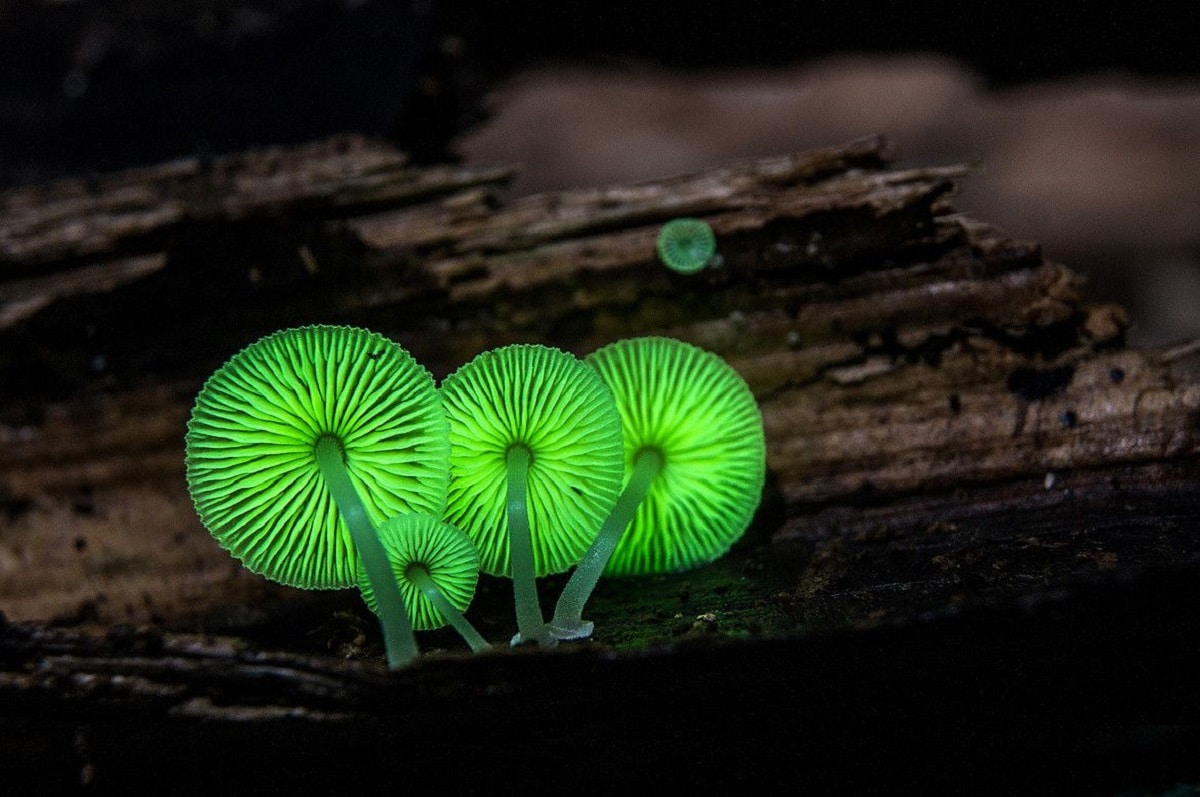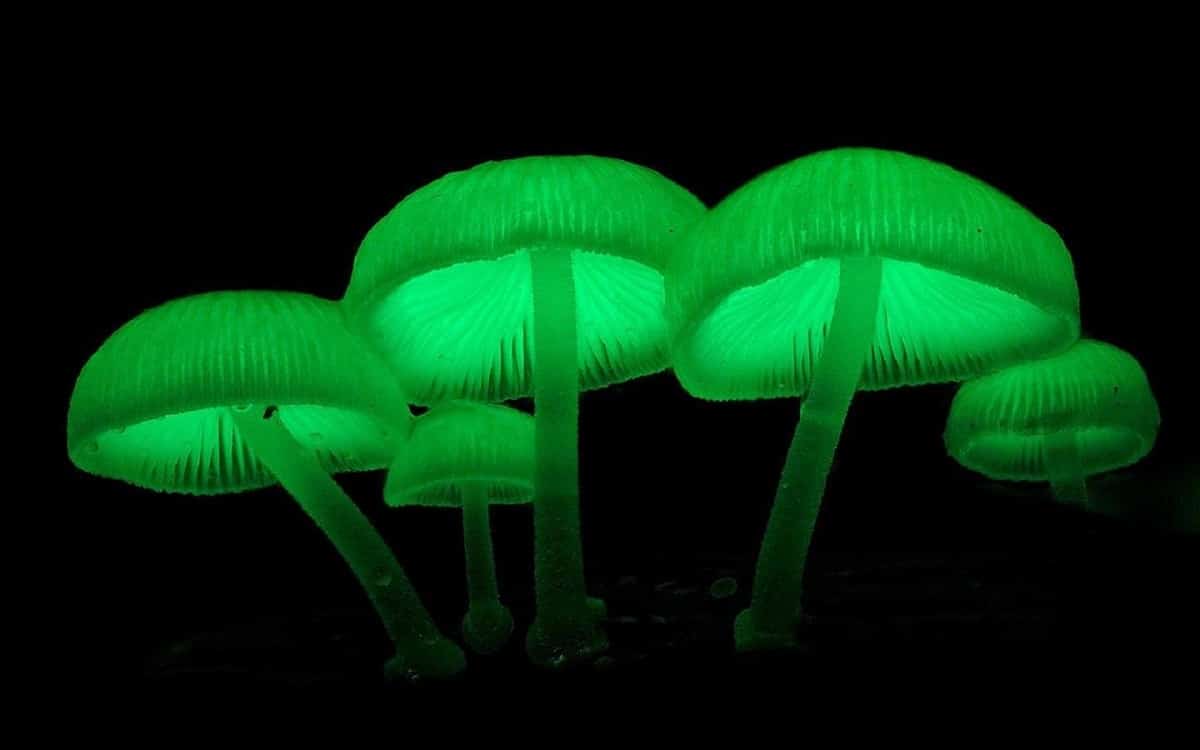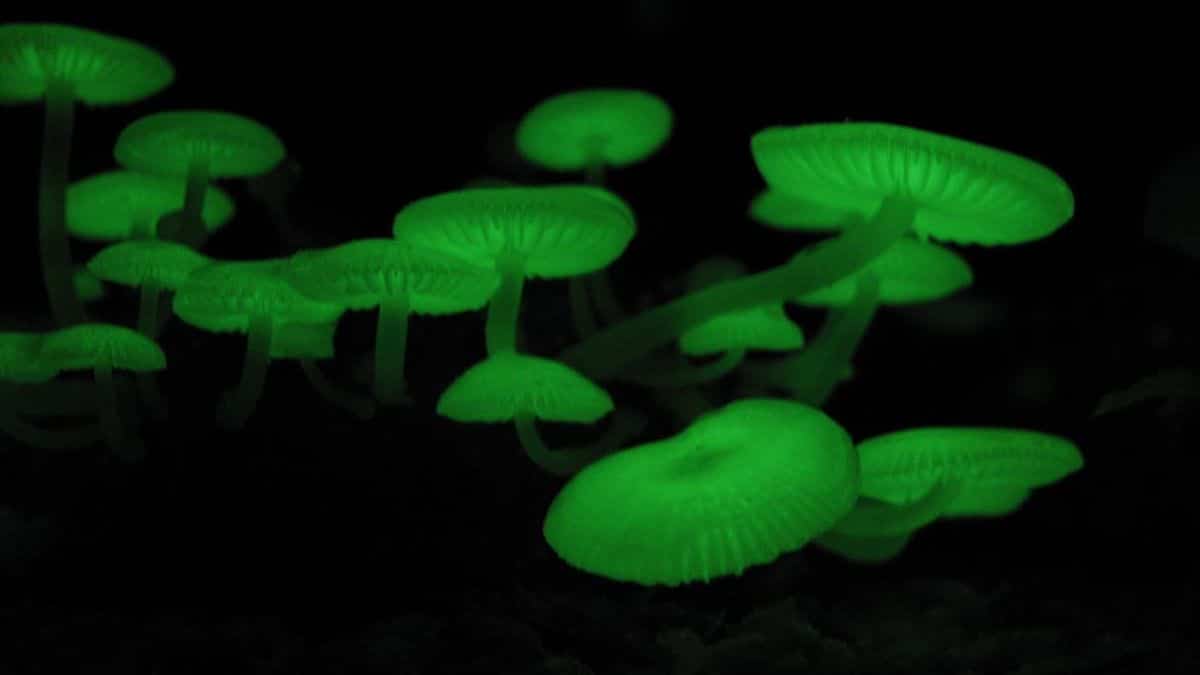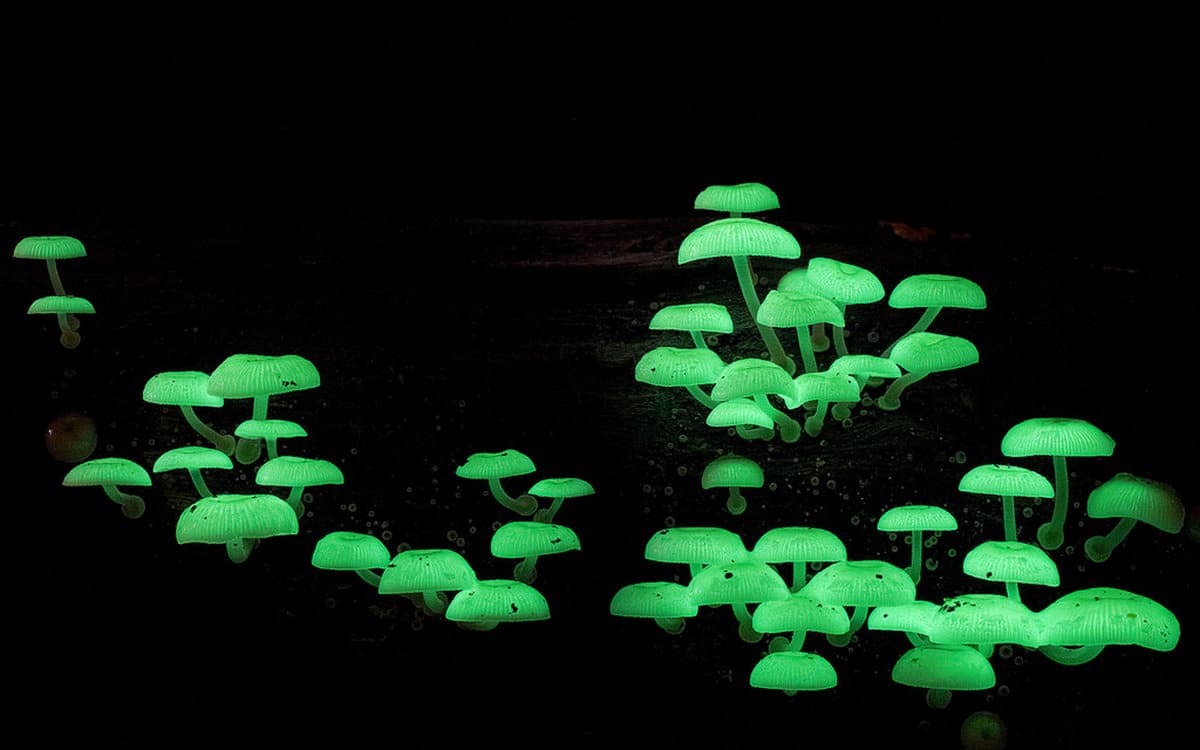
Mycena chlorophos It is a species of fungus in the Fungiaceae family. First described in 1860, the fungus is found in subtropical Asia, including Japan, Taiwan, Polynesia, Indonesia, and Sri Lanka, as well as Australia and Brazil. It is quite curious for being a mushroom like bioluminescence.
In this article we are going to tell you all the characteristics, classification and properties of the Mycena chlorophos.
Key features

The mushrooms have pale brownish-gray slimy caps up to 30 mm in diameter on top of stems 6-30 mm long and up to 1 mm thick. The Mycena chlorophos It is a fungus that is bioluminescent and emits a light green glow. The results are produced on fallen wood debris such as twigs and trunks of dead trees in the forest. The fungus can grow and fruit under laboratory conditions., and growth conditions that affect bioluminescence have been studied.
The cap is initially convex, later flattening (sometimes with a central depression), and can be up to 30 mm in diameter. The lid has radial grooves that extend almost to the center, sometimes cracked at the edges with small crenellations. Pale brownish-grey in color, fades after swelling, slightly sticky. The white stems are 6–30 mm long, 0,3–1 mm thick, hollow, and translucent. It has small hairs on its surface. Stems discoid or slightly bulbous at the base, 1-2,5 mm broad. The slender gills are either not attached to the stem or are attached to a light collar that encircles the stem.
Initially white, then gray, they are rather tightly packed, with 17-32 full-length gills and 1-3 rows of lamellae (the shorter gills do not extend completely from the brim of the cap to the stem). Gills 0,3-1 mm wide, with mica margins. The pulp is very fine and has a strong ammonia smell. Both the cap and the gills are bioluminescent, while the mycelium and stem are barely luminescent.
Spores are white, smooth, approximately oval, 7-8,5 x 5-6 μm in size.. Basidioids (spore-bearing cells) measure 17-23 x 7,5-10 µm with four sterigmata spores about 3 µm long. The outgrowths are 5–8 µm wide, shorter and more numerous than those of the basidiocarps, and form a somewhat gelatinous shell.
Cheilocystidia (cysts on the edge of the capsular eyelid) are 60 x 7–21 μm in size, transparent, conical or ventricular (inflated). The tip of the cheilocystidia is sharply removed or has a short appendage of 15 x 2-3 μm, sometimes branched, thin or slightly thick-walled. There are no cysts on the branchial side. They are rod-shaped and 25-60 x 13-25 μm in size. Their walls are somewhat thick, spiny on bare surfaces, with short, simple growths up to 3 μm.
Habitat and distribution of Mycena chlorophos

Mycena chlorophos fruiting bodies are found in woodlands where they grow in clumps on woody debris such as twigs, twigs, and fallen bark. In Hachijo and Kogijima, Japan, the fungus is found mainly on the rotting petioles of Phoenix roeberenii palm trees. The fungus needs the right range of humidity to form mushrooms; on the island of Hachijo, for example, fruiting occurs only during the rainy seasons of June/July and September/October when the relative humidity is around 88%, usually the day after the rain. Experimental studies have shown that mushroom primordia that are too wet become deformed, while conditions that are too dry cause the caps to deform and rupture as the fragile gel membrane that covers them ruptures.
In Asia, the species has been found in Japan, Taiwan, Polynesia, Java, and Sri Lanka. In Japan, the mushroom is becoming rarer as its natural habit declines. Several Australian field guides have reported the species from the country. This fungus has also been documented several times in Brazil. Mycena chlorophos it is one of several mushrooms featured on a set of postage stamps issued in Samoa in 1985.
Bioluminescence of Mycena chlorophos

The species was first scientifically described as Agaricus chlorphos in 1860 by Miles Berkeley and Moses Ashley Curtis. The original specimen was collected on the Bonin Islands in October 1854 by American botanist Charles Wright during his North Pacific Expedition and Survey Expedition of 1853-1856. Pier Andrea Saccardo transferred the species to the genus Mycenae in an 1887 publication. Daniel Desjardin and colleagues redescribed the species and established a phylogenetic specimen in 2010.
In 1860, Berkeley and Curtis described the species Agaricus cyanophos from material also collected from the Bonin Islands. The material was found close to where the M. chlorphos specimen was originally found, but several weeks later. The Japanese mycologists Seiya Ito and Sanshi Imai studied these collections in the late 1930s and concluded that the cyanobacterium Agaricus blazei was the same species as M. chlorophos, despite the fact that the shape of the hat, the combination of gills and the color of the emitted light were different.
Desjardin and his colleagues agree with this decision after examining the type material of both taxa. M. chlorphos is classified in the section Exornatae of the genus Mycenae. Other luminescent species in this section are M. discobasis and M. marginata. Some authors considered M. illumans to be synonymous with M. chlorphos due to morphological similarities, but molecular analysis indicated that they were separate species.
Since the fungus is small and bears fruit only in limited seasons on a small scale, the researchers investigated the conditions needed to artificially grow the species under laboratory conditions in order to have more material to study the mechanism of bioluminescence and help protect this species. species. The optimum temperature for mycelium growth is 27 °C, while the optimum temperature for the growth of the primordium is 21 °C. These temperatures are consistent with the subtropical climate where this species is commonly found.
The maximum luminescence occurs at 27 °C, approximately 25 to 39 hours after primordia begin to form, when the cover is fully expanded. At 21 °C, the luminescence persists for approximately 3 days and becomes undetectable with the naked eye approximately 72 hours after primordium priming.
I hope that with this information you can learn more about Mycena chlorophos and its characteristics.